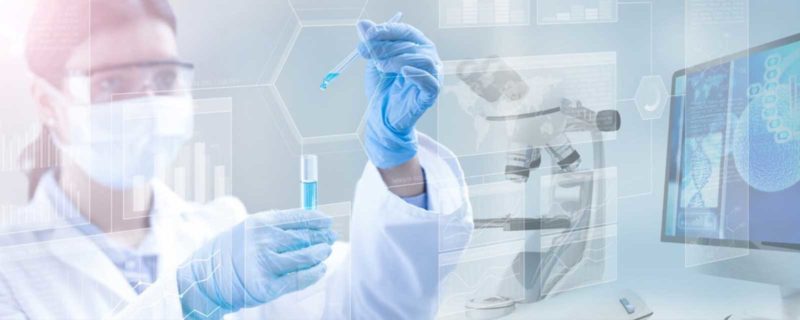
Downstream Bioprocessing: Seven Hot Topics Shaping the Next 24 Months
Downstream faces unprecedented pressure. There are higher upstream titers, more types of modalities (such as mAbs, AAVs, and enzymes), and mandates for cost and sustainability. Here’s an editorial overview of the seven key topics that are important—not just as buzzwords but as practical tools for capacity, cost, quality, and compliance.
From “Connected” to Truly Continuous Purification
Periodic counter-current chromatography (PCC) boosts productivity and improves resin use. This change enables more continuous DSP workflows and smaller facility footprints (Schwarz) [1].
Strategic Buffer Management: In-Line Conditioning & Recycling
Inline buffer preparation systems allow for high-speed buffer formulation, such as producing 60 L/min in just one hour. These systems cut down on storage needs and reduce production delays (Gen Eng Biotechnol News) [2]. They use dynamic feedback control to manage changing stock concentrations while maintaining steady buffer properties (Cytiva) [3].
AAV Downstream: Scalable Empty/Full Separation
Chromatography-based methods, such as analytical anion-exchange using safe choline compounds, enable scalable separation of empty and full AAV capsids (Kurth et al.) [4]. Newer methods like weak partitioning chromatography (WPC) paired with multi-column chromatography (MCC) enhance full capsid selectivity and productivity (Di et al.) [5].
PAT and MAM: Real-Time Assurance in QC
The Multi-Attribute Method (MAM) is becoming more popular. It makes it possible to monitor several product quality attributes at once. MAM aligns with USP General Chapter <1060> and provides a more effective alternative to traditional QC tests (Biopharm International) [6]. Reviews also show that LC–MS–based MAM supports real-time, compliant QC workflows (Yang et al.) [7].
Sustainability by Design: Lifecycle-Based Approach
Life-cycle assessments (LCA) show that single-use biomanufacturing often results in lower environmental impacts, including energy and water consumption as well as waste, compared to traditional systems. This is true across scales from tens to thousands of liters (Flanagan) [8]. Recent studies reinforce these findings, with streamlined cradle-to-gate LCAs identifying opportunities for reducing impacts in biologics production (Budzinski et al.) [9].
Engineered/Novel Proteins Strain Platform DSP
Non-classical scaffolds require specific purification strategies. These include custom precipitation protocols, phase separation, or alternative chromatographic formats. Published reviews on real-world cases emphasize the importance of considering upstream manufacturability in early-stage design (Remans et al.) [10].
Regulatory Currents for ATMP Purification
The FDA’s draft guidance on safety testing for human allogeneic cell products clarifies the expectations for cell safety. This includes testing for adventitious agents and tumorigenicity at different manufacturing stages (FDA, 2024) [11].
What to Do About It (Practical Takeaways)
• Test a PCC module to change batch capture and take advantage of higher resin use and efficiency [1].
• Use inline conditioning systems for your high-volume buffers; confirm the benefits of in-line vs. traditional formulations and estimate savings in space, cost, and utilities [2][3].
• Create AAV separation methods based on strong chromatographic techniques, like choline-based AEX and WPC + MCC combinations for scalability and control [4][5].
• Incorporate MAM into QC systems; validate under USP <1060> guidelines to support real-time quality checks [6][7].
• Embed sustainability metrics (e.g., kg plastics per batch, WFI-kWh, CO₂e per gram) based on LCA insights [8][9].
• Ensure manufacturability is part of protein design to simplify downstream DSP processes [10].
• Sync purification and safety programs for ATMPs with the new FDA cell safety testing standards [11].
Footnotes
-
1. Schwarz, H. Integrated continuous biomanufacturing on pilot scale for monoclonal antibodies. 2022. PMC. doi:10.1007/s12257-021-00099-1.
-
2. “Inline Prep Could Be Ideal Solution for Buffer Bottlenecks.” Genetic Engineering & Biotechnology News, 23 July 2025.
-
3. “Connected Inline Conditioning Solution for Bioprocessing.” Cytiva, 16 Feb. 2025.
-
4. Kurth, S., et al. “Separation of full and empty adeno‑associated virus capsids using non‑toxic, choline‑type compounds in analytical AEX.” Analytical Biochemistry, 2024.
-
5. Di, W., et al. “Improved adeno‑associated virus empty and full capsid separation by WPC and MCC.” PubMed, 2024.
-
6. “Best Practices for Mass Spectrometry-Based Multi-Attribute Method (MAM) for Therapeutic Proteins incorporating USP General Chapter <1060>.” Biopharm International, 11 May 2023.
-
7. Yang, F., et al. “Mass spectrometry-based multi‑attribute method in protein therapeutics: product quality monitoring and QC.” PMC, 2023.
-
8. Flanagan, W. Environmental life-cycle assessment of single-use and conventional process technology: comprehensive environmental impacts. BioPharm International
-
9. Budzinski, K., et al. “Streamlined life cycle assessment of single-use technologies in biopharmaceutical manufacture.” New Biotechnology, 2022.
-
10. Remans, K., et al. “Protein purification strategies must consider downstream manufacturability.” Microbial Cell Factories, 2022.
-
11. “Safety Testing of Human Allogeneic Cells Expanded for Use in Cell-Based Medical Products; Draft Guidance for Industry.” FDA, 15 May 2024.
